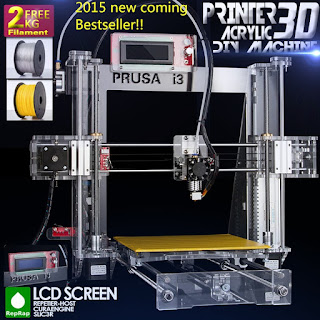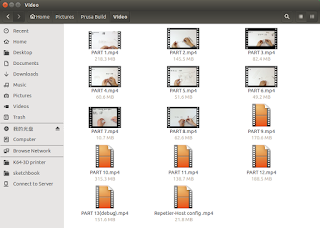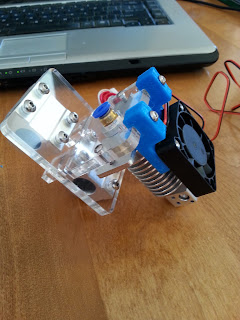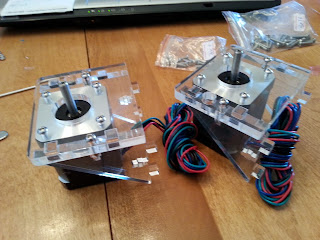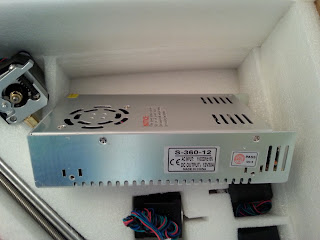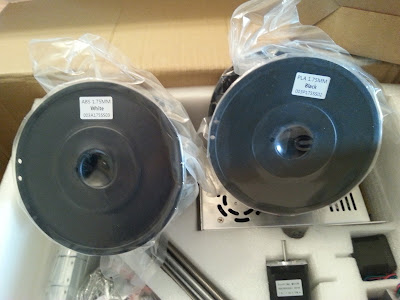I thought it was time I took a little side break, and kicked up something I've been thinking about for a while.
I want to create an autonomous rover based on the concept of the Mars Curiosity Rover.
No, it won't have a radioisotope thermoelectric generator (RTG), nor will it have fancy bio-chemical analysis thing-a-ma-bobbers...
But it will be cool!
 Requirements:
Requirements:
Independent 6-wheel "rocker-bogie" suspension to allow it to crawl over fairly rough terrain unimpeded.
 |
| Neato XV-11 Wheel assembly |
I happened to acquire a few Neato XV11 robot vacuums,
and will be tearing them down for parts. Each one has a pair of geared motors with optical encoders.
A Teensy 3.2 will be used for each pair to ensure accurate positioning and velocity profiling.
 |
| Teensy 3.2 for Motion Control |
 |
| Neato XV-11 LIDAR sensor |
The Neato XV-11 also has a very unique LIDAR system for mapping out room dimensions and identifying obstacles.
LIDAR mapping, A* Path planning, and Object Avoidance via multiple Sharp Infra-red proximity sensors will be done on a Raspberry Pi 3B.
GPS, as well as a 9 degree of freedom fusion sensor on the chassis will also be managed by this Pi.
 |
| A* Path Planning |
A Second Raspberry Pi 3B will be responsible for communications and streaming cameras. Running Nodebots, a javascript engine for Robot management, this Pi will have api's to allow connectivity via Android tablet, as well as a full web server.
The 4 dof manipulator arm will be managed by another Teensy 3.2 and a separate 9 degree of freedom fusion sensor will sit on the wrist positional feedback.

I found on my previous rover, that another set of Infrared proximity sensors were needed on the bottom, front and back.
Positioned on a 45 degree angle, these "cliff sensors" would alert you when the rover was in danger of falling over the edge of a cliff... ie, a set of stairs.
Similar to my previous rover, I will use a commercial 20,000ma Li-Ion power bank to power the electronics, and a separate Lead Acid 12v battery for the motors and servos.
I am also going to attempt foldable solar panels. Four panels, attached with hinges and servos, will fold away when not in use, but be able to extend off the back, fold out, and position for maximum light transfer when required.
Any thoughts or suggestions are welcome as I embark on this awesome summer project.
References:
https://en.wikipedia.org/wiki/Curiosity_%28rover%29http://www.instructables.com/id/How-to-Build-an-Internet-Controlled-Mars-Rover/
https://www.quora.com/What-are-the-reasons-behind-using-rocker-bogie-suspensions-in-mars-curiosity-rover
https://www.sparkfun.com/news/490
https://xv11hacking.wikispaces.com
http://www.nasa.gov/sites/default/files/atoms/files/mars_survival_kit_-_rover_final_4.pdf
http://arduino-pi.blogspot.ca/2014/04/adding-5dof-arm-to-my-autonomour-rover.html
https://www.sparkfun.com/products/242









